Schneider MTN630719 Handleiding
Schneider
Bewegingsdetector
MTN630719
Bekijk gratis de handleiding van Schneider MTN630719 (10 pagina’s), behorend tot de categorie Bewegingsdetector. Deze gids werd als nuttig beoordeeld door 97 mensen en kreeg gemiddeld 5.0 sterren uit 49 reviews. Heb je een vraag over Schneider MTN630719 of wil je andere gebruikers van dit product iets vragen? Stel een vraag
Pagina 1/10

V6307-561-00 02/08
KNX ARGUS Presence Basic
Operating instructions
Art. no. MTN6307..
GB
– Surface-mounted housing for ARGUS Presence (Art.
no. MTN550619)
¼DANGER
Risk of fatal injury from electrical current.
All work carried out on the unit may only be per-
formed by skilled electricians. Observe the regu-
lations valid in the country of use, as well as the
valid KNX guidelines.
The KNX ARGUS Presence Basic (called ARGUS in the
following) is a KNX presence detector for interior ceiling
mounting.
It detects smaller movements within a circumference of
360° and a radius of 7 m (at a mounting height of 2.5 m).
|The specified ranges refer to average conditions
for the recommended mounting height and are
therefore guide values. The range and sensitivity
can vary greatly when the temperature fluctuates.
When movement is detected, a data telegram defined by
the programming is transmitted and then evaluated to
control the lighting, blinds, or heating, for example.
The ARGUS presence function continuously adjusts for
brightness in the room. If sufficient natural light is avai-
lable, the device will switch the artificial light off even if a
person is present. The overshoot time can be adjusted
using the ETS. The integrated light sensor continually
measures the brightness level and processes this infor-
mation in the application. In addition, it is possible to
measure the brightness with an external light sensor and
have it evaluated.
The device is designed for use in offices, schools, public
buildings or at home, for example. It is intended for cei-
ling mounting in a No. 60 mounting box, and can also be
mounted on the ceiling in the surface-mounted housing
for ARGUS Presence. The ARGUS has an integrated
bus coupler and its power is supplied via KNX.
Accessories
For your safety
ARGUS introduction
|Movement/presence detectors are not suitable
for use as components of an alarm system.
|Movement/presence detectors can trigger false
alarms if the installation site has been chosen un-
favourably.
Movement/presence detectors switch on as soon as
they detect a moving heat source. This can be a person,
but also animals, trees, cars or differences in temperatu-
re in windows. In order to avoid false alarms, the chosen
installation site should be such that undesired heat sour-
ces cannot be detected (see section „Selecting the in-
stallation site“).
AProgramming button
BProgramming LED
CBus connecting terminal
When selecting a suitable installation site, you should
take a number of factors into account so that the ARGUS
operates optimally.
• The shorter the distance between the detected person
and the ARGUS, the better smaller movements are
detected.
• When a person is walking, a larger area of detection is
available. The reference level for the detection is the
floor.
• The mounting height has a direct effect on the range
and sensitivity of the ARGUS. The optimal mounting
height is 2.5 m.
The following diagram shows the ranges of the ARGUS.
They are based on average temperature conditions at a
mounting height of 2.5 m. The range of a movement de-
tector can fluctuate considerably at variable temperatu-
res.
Using ARGUS with alarm systems
Connections, displays and operating
elements
Selecting the installation site
Mounting height Area of detection
2.0 m 11 m
2.5 m 14 m
3.0 m 17 m
A
B
C
14,0 m
2,5 m
• The position of the ARGUS in regard to the direction of
movement also affects detection. If possible, install the
movement detector sideways to the direction of move-
ment.
• If you wish to attach several presence detectors, install
them so that the detection areas of the individual de-
vices intersect each other.
• The ARGUS is designed for permanent installation on-
ly. Mount the ARGUS on a fixed base only to avoid
faulty operation caused by the movement of the detec-
tor.
• To prevent undesired load switching, do not mount the
switched luminaire directly in the detection area of the
ARGUS.
• Avoid mounting the device above a luminaire (e.g.
standard lamp). The heat radiation of the luminaire
can influence the function of the ARGUS. Brightness
can no longer be measured when there is direct light
incidence. If luminaires are mounted in the ARGUS
detection area, a distance of at least 3 m must be com-
plied with when the connection load is high.
1The ARGUS is connected via a bus connecting ter-
minal and snapped onto the retaining ring.
AFlush-mounted installation
BSurface-mounted installation
For flush-mounted installation, the retaining ring inclu-
ded with supply is fixed with two screws to a size 60 in-
stallation box. For surface mounting, the retaining ring is
mounted in the surface-mounted housing which is avai-
lable as an accessory.
1Press the programming button.
The programming LED lights up.
2Load the physical address and application into the
device from the ETS.
The programming LED goes out.
The application has been loaded successfully, the de-
vice is ready for operation.
ARGUS installation
Putting ARGUS into operation
OK OK
A B
1

V6307-561-00 02/08
If you have technical questions, please contact the Cus-
tomer Care Center in your country.
www.schneider-electric.com
This product must be installed, connected and used in
compliance with prevailing standards and/or installation
regulations. As standards, specifications and designs
develop from time to time, always ask for confirmation of
the information given in this publication.
Technical data
Nominal voltage: DC 24 V (+6 V / -4 V)
KNX connection: Bus connecting terminal
Current consumption: max. 8 mA
Angle of detection: 360°
Number of levels: 6
Number of zones: 136 with 544 switching seg-
ments
Number of
movement sensors: 4
Recommended
mounting height: 2 m - 5 m, optimum 2.50 m
Light sensor: infinitely adjustable in ETS bet-
ween approx. 10 and 2000 lux In
general, the values measured by
the sensor deviate from the ligh-
ting conditions at the main place
of usage (e.g. work surface). The
extent of the deviation is depen-
dent on the installation site of the
sensor, the properties of the
room (reflection of the lumin-
aires, type of paint on the walls
and the surfaces) and the lumin-
aires used.
Range: Radius of approx. 7 m; can be
set in ETS
Overshoot time: from 1 s to 255 hours; can be set
in the ETS
Display elements: 1 red programming LED
Operating elements: 1 programming button
Ambient temperature
Operation: -5 °C to +45 °C
(at temperatures > 30 °C, move-
ment detection is limited)
Storage: -25 °C to +45 °C
Transport: -25 °C to +70 °C
EC guidelines: EMC guideline 89/336/EEC
Initialisation: Due to the limitation of the tele-
gram rate, a telegram cannot be
generated until 20 seconds after
initialisation at the earliest.
Type of protection: IP 20
Schneider Electric Industries SAS
2

Presence 1333/1.0
© 2008 Schneider Electric
●General
Application 1333/1.0 has been developed for the KNX
presence detector. In the following the device will be
referred to as the presence detector.
The distinctive feature of the presence detector
function is the integrated sensor, which measures
brightness continuously. This function is able to
measure and evaluate changes in the external
brightness (daylight) even when artificial lighting is
switched on. Even when people are present, the
presence detector function switches off the lighting
when the external brightness is sufficient (above the
brightness threshold set) for working and safe use of
the rooms without additional artificial lighting. This
feature reduces energy consumption. The presence
detector will not switch the lighting on until it detects
movement in front of the device when the ambient
brightness is too low. If movement is no longer
detected in the activated state, the integrated
staircase timer will switch the lighting back off.
In contrast to this, the movement block will only
switch off when there is no more movement in front
of the device - in other words, independently of the
brightness. The switch-on condition is however the
same as with the presence detector block.
The ETS application includes two independent
presence or movement blocks, each with four output
objects.
The technical data for the presence detector may be
found in the description of the device.
|Note:
All the settings described refer to ETS version 3,
but you can use all the settings and functions
with ETS version 2 as well.
The application files (vd2 and vd3) are
configured in such a way that the application
loading time is considerably reduced. When you
convert an ETS 2 project to ETS 3, you lose this
time saving. If you are working with ETS 3, use
the vd3 files.
Total possible addresses and connections:
254 addresses; 255 connections
|Note:
If you switch back to the preset values in either
ETS 2 or ETS 3 (by clicking "Standard"), all the
values that you have changed so far will be
deleted. Any group addresses which have been
parameterised will be lost.
|
Note:
Because various functions depend on other
functions, these dependent functions are only
visible and selectable in the ETS when the
preceding function has been enabled. If you de-
select functions or parameters, group
addresses that have already been connected
may be removed.
●Getting started quickly
When you insert the application in the ETS or click on
the "Standard" button, the ETS application will switch
automatically to minimum configuration.
In minimum configuration, it is possible to put the
presence detector into operation. For some
application cases, the minimum configuration is even
adequate for practical use. We also recommend
opening minimum configuration as a way of
familiarising yourself with the application software for
the presence detector. Here all of the extended or
more complex parameters are disabled. In "Block
configuration" only the first "Movement/presence"
block is enabled for use. In the "Telegrams" tab only
output object 1 is enabled. This is a 1 bit output object.
At the start of movement this object sends a 1
telegram and when the internal staircase timer has
elapsed it sends a 0 telegram. Each parameter can
always be tuned to its individual requirements. The
brightness threshold and the staircase timer always
need to be adjusted to suit requirements. Check the
"Brightness" and "Times" tabs.
In this way the corresponding objects are connected
to a KNX switch actuator.
To familiarise yourself with the extended and more
complex parameters see the following pages.
Presence 1333/1.0
1/1/1
1/1/2
Switch obj. Switch obj.
Status feedback obj.
Switch actuator
Status feedback obj.
Safety pause
Movement-/
Presence-
Detector
3
Product specificaties
| Merk: | Schneider |
| Categorie: | Bewegingsdetector |
| Model: | MTN630719 |
Heb je hulp nodig?
Als je hulp nodig hebt met Schneider MTN630719 stel dan hieronder een vraag en andere gebruikers zullen je antwoorden
Handleiding Bewegingsdetector Schneider

10 Juni 2023

29 Maart 2023

24 Maart 2023

17 Maart 2023

16 Maart 2023

7 Maart 2023

6 Maart 2023

1 Maart 2023

22 Februari 2023
Handleiding Bewegingsdetector
- Yale
- Cotech
- BEA
- Honeywell
- Homematic IP
- Interlogix
- XQ-Lite
- DSC
- Theben
- KlikaanKlikuit
- Techly
- Wentronic
- Aqua Joe
- Chamberlain
- GEV
Nieuwste handleidingen voor Bewegingsdetector

9 September 2025

8 September 2025
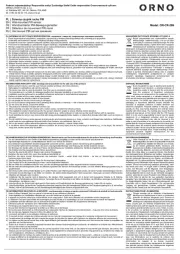
11 Augustus 2025
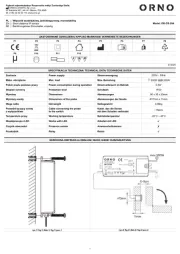
11 Augustus 2025
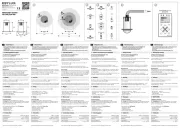
6 Juli 2025
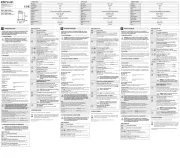
6 Juli 2025
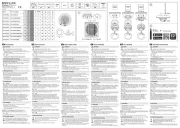
5 Juli 2025

5 Juli 2025
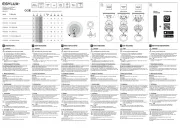
5 Juli 2025
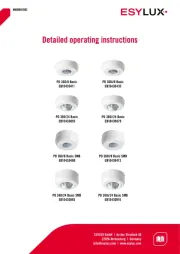
5 Juli 2025